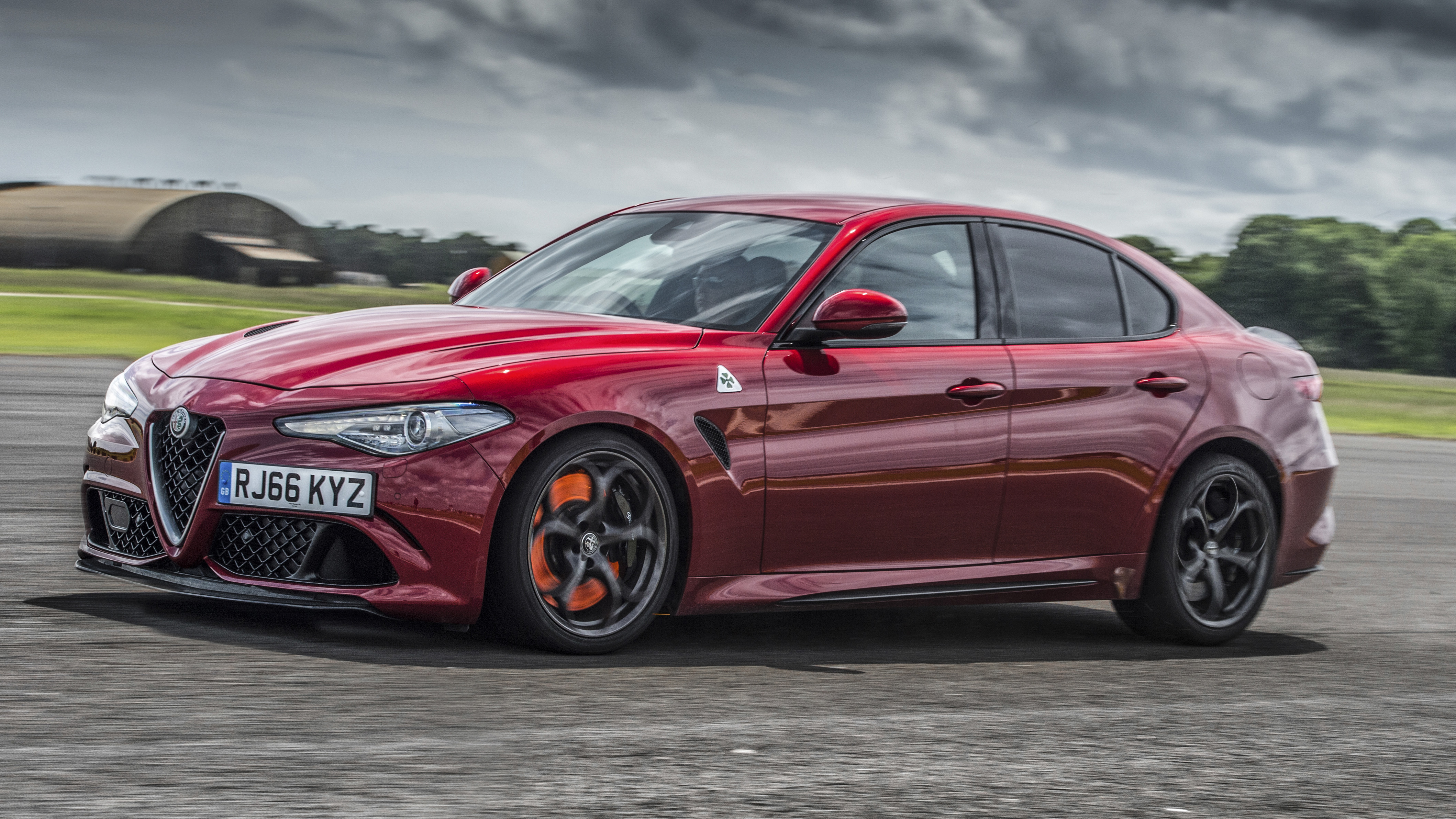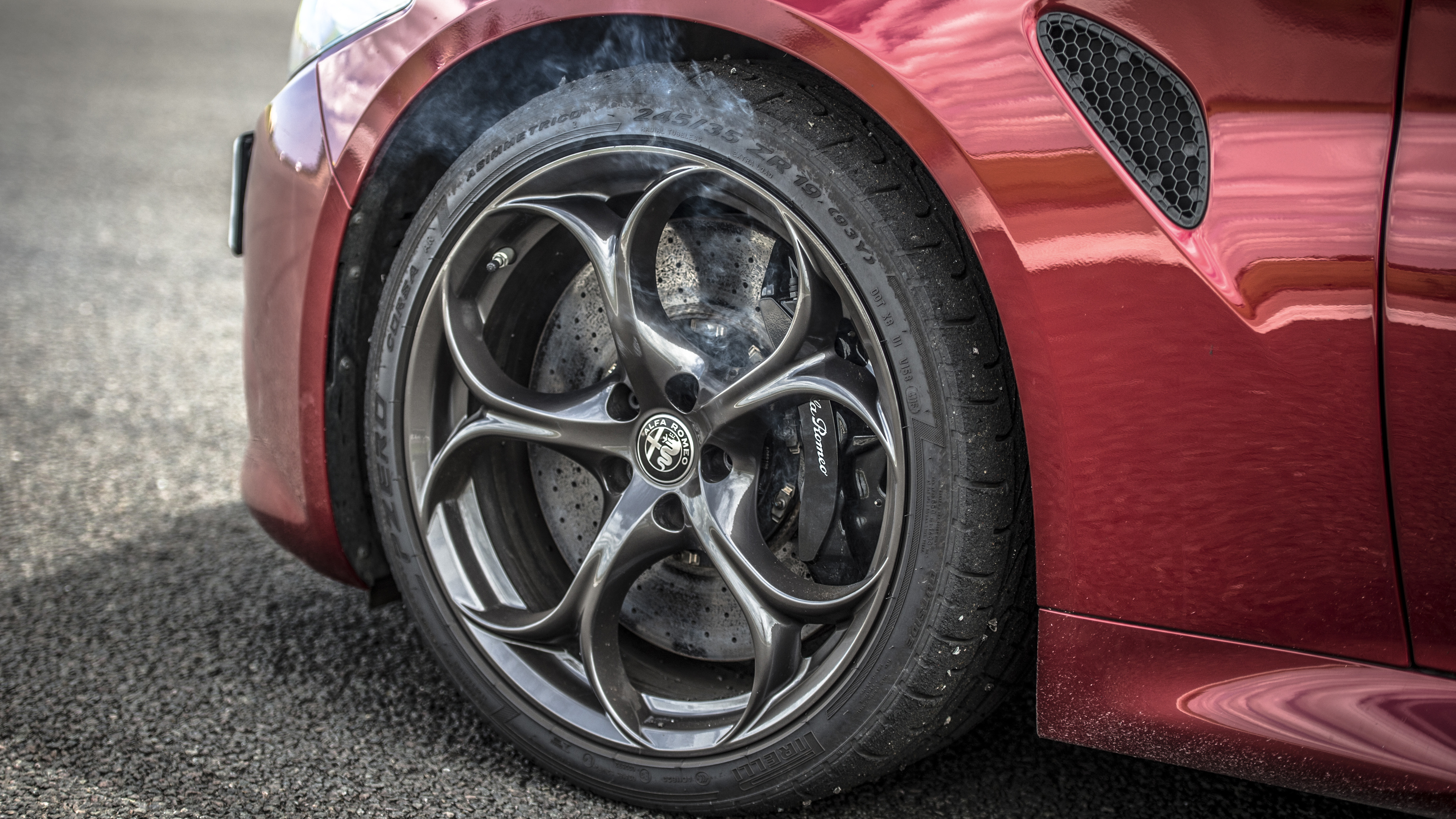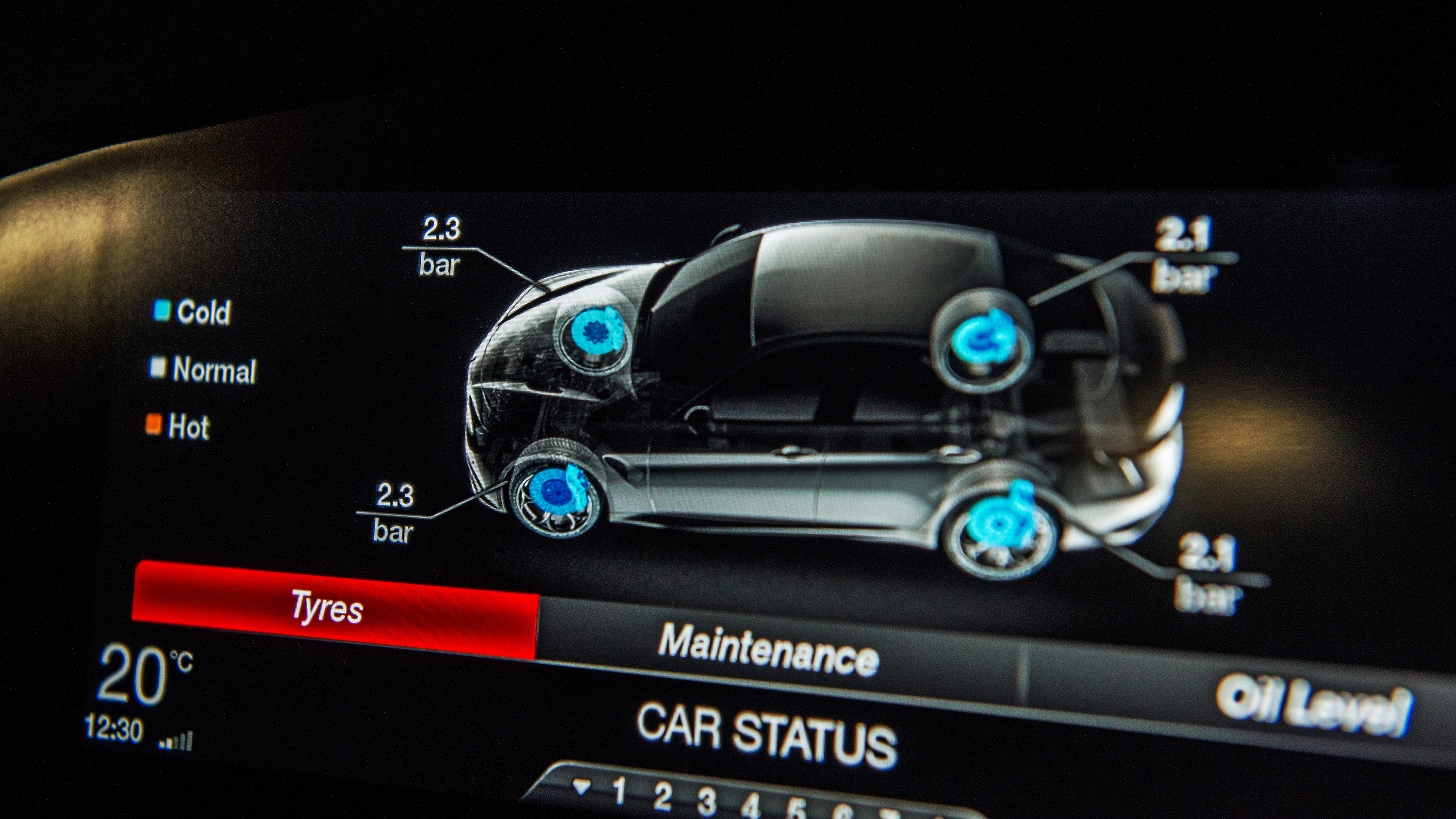
Alfa Romeo Giulia Quadrifoglio – long-term review
£61,000 OTR/£73,505 as tested
SPEC HIGHLIGHTS
- SPEC
Alfa Romeo Giulia Quadrifoglio
- ENGINE
2891cc
- BHP
510bhp
- MPG
30.7mpg
- 0-62
3.9s
How to get the most from Alfa's carbon brakes
Brakes are quite a crucial component of a car. Without them, things can get very airbag-y, very quickly. So, telling your passengers that the brake pedal in your 200mph super-saloon isn’t actually connected to any mechanical componentry – rather your foot sends electronic pulses to a computer to tell the car to slow down – ruffles an eyebrow or two.
See, the Quadrifoglio uses what’s known in the business as ‘braking-by-wire’. This fighter-jet tech currently isn’t popular, with Toyota being the only other manufacturer using it since Mercedes-Benz made a U-turn on the technology 10 years ago, reverting back to hydraulic after many, many complaints.
So why is Alfa backing it? Well, it’s 4kg lighter than a traditional set-up, builds brake pressure notably faster (so you can stop quicker), and gets rid of that awkward ABS shudder when you really slam on the pedal (good for track work).
But the Quadrifoglio comes with two different flavours of brakes: the standard cast iron and aluminium floating ventilated discs, or a set of bigger (390mm fronts and 360mm rears) and carbon-ceramics that cost an extra £5,500.
Ours is optioned with the latter – the same carbon-ceramic technology that was used on the Ferrari Enzo, no less. And I’ve seen the benefits of the beefy Brembos on track, as when digging deep into the pedal at speed, they offer powerful, fade-free braking and the ability to deal with crazy temperatures. But for day-to-day driving, the brake-by wire system and carbon combo isn’t perfect.
It’s due to the brakes only working properly after a decent heat cycle. Otherwise, there’s a real lack of bite at slow speed and you have to put an unnatural amount of shove through the pedal for it to lurch to a stop. Otherwise, it’ll just creep into the back of the car in front in a seriously embarrassing 2mph accident.
There is a useful display to show when you’re in their operating zone, but during normal driving, you rarely get there. And getting enough heat into the brakes on a commute requires either an anti-social stop, or trail-braking around like a wally.
So, unless you’re tracking the car regularly, it might be better to save your cash and get the smaller, standard discs. Even if they don’t look as cool tucked behind those gorgeous dark telephone-dial wheels.
Featured

Trending this week
- Car Review
Porsche 911 GT3 (992.2)






